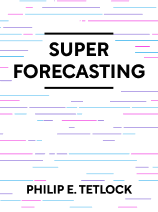

This article is an excerpt from the Shortform book guide to "Superforecasting" by Philip E. Tetlock. Shortform has the world's best summaries and analyses of books you should be reading.
Like this article? Sign up for a free trial here .
How does intuitive thinking work? Is there a mechanism behind the way we arrive at intuitive, seemingly unexplainable insights or is it all just a fluke?
Typically, we think about intuition as a “gut feeling.” However, intuitive thinking is not all that mysterious. Just because we can’t pinpoint the logical sequence of how we arrived at an insight, it doesn’t mean there’s no mechanism behind its workings.
Here is how intuitive thinking works.
The Power of Intuitive Thinking
We tend to think of intuition as any information we know without being able to explain why we know it. This lack of awareness tells us that intuition is an unconscious process and has the power to lead us down the wrong mental path. But intuitive thinking can be remarkably powerful in some situations, and can even produce correct answers quicker and more efficiently than deliberate thinking. You may have experienced this in school exams if you ignored a “gut feeling” about a question in favor of thinking it through logically, only to find out afterward that your first instinct had been correct.
Based on what we know about deliberate and intuitive thinking, it shouldn’t be possible for intuition to succeed where logic fails. But scientists have documented this effect in many situations, not just the occasional exam question.
In one study on intuitive thinking, researchers interviewed the commander of a firefighting team who described an unusual experience on a routine call to a kitchen fire. These fires were typically easy for the team to put out with fire hoses, but this one seemed to keep fighting back. On top of that, the fire was far too small to give off the amount of heat in the room, but any fire large enough to create that kind of heat would be much noisier. Something didn’t add up. On instinct, the commander ordered the team out of the house—just in time to watch the living room floor collapse behind them, revealing a roaring fire in the basement.
How could the commander possibly know that his team was in danger? One answer is experience. The fire commander has so much experience with fires that the typical patterns were deeply encoded in his memory—When something didn’t fit the pattern, it stood out to him immediately. Experts who have thousands of hours of experience with a situation often pick up on patterns without being consciously aware of it.
In addition to experience, context matters when it comes to intuitive thinking. For some fields, the environment contains valid information about a given situation. As experts spend more and more time in this environment, they unconsciously register those cues and organize them into patterns. To the fire commander’s trained eye, the excess heat, lack of noise, and tenacity of the kitchen fire were environmental cues that didn’t fit the pattern, triggering an accurate intuitive insight.
(But not all fields contain these cues, regardless of your experience looking for them. For example, stock market variations are harder to predict because the market tends to respond immediately to the same data an expert would use to make predictions—their expertise doesn’t give them an edge.)
Intuitive thinking is a powerful force, and examples like the fire commander’s experience make a compelling case for following our intuition. On top of that, a strong intuition feels convincing. Whether we’re right or wrong, once our subconscious mind hooks onto that pattern, it’s difficult to let go.
Even with the knowledge of what makes intuition more or less likely to be accurate (experience and context), it’s hard to know how much of each of those needs to be present before we can safely trust our gut. Whenever possible, it’s best to double-check intuition with logical thinking. There is a fine line between the experienced fire commander and the scalpel-happy surgeon.

———End of Preview———
Like what you just read? Read the rest of the world's best book summary and analysis of Philip E. Tetlock's "Superforecasting" at Shortform .
Here's what you'll find in our full Superforecasting summary :
- How to make predictions with greater accuracy
- The 7 traits of superforecasters
- How Black Swan events can challenge even the best forecasters






